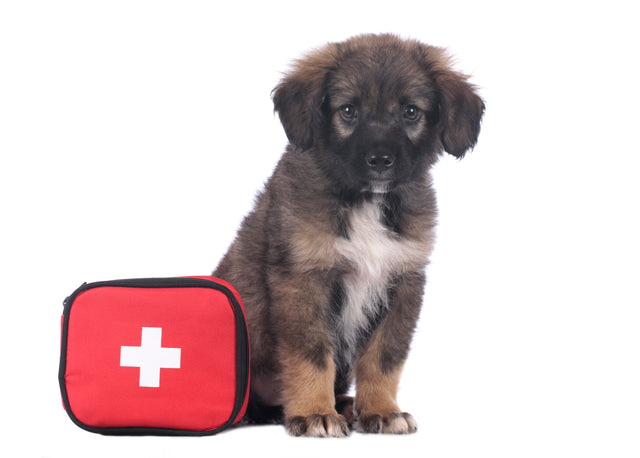It’s rare to find a human who enjoys going to the dentist but we do it because we understand that without regular checkups, we could develop cavities and other dental issues. Just like their human owners, dogs have only one set of adult teeth, making regular dental care extremely important.
Common Dental Issues Found In Dogs
The following are the top dental issues discovered in our canine companions:
Periodontal Disease
Periodontal disease is what causes your dog to have bad breath. There are four stages of periodontal disease:
- Stage 1: In this stage, the teeth have a build-up of tartar and the gums may appear slightly swollen and red. No bone loss will be found on the dental x-ray.
- Stage 2: Visually, Stages 1 and 2 can appear very similar. However, if an x-ray of the jaw is taken, up to 25% bone loss will be noted.
- Stage 3: When a dog suffers from Stage 3 dental disease, significant bone loss has occurred. The only way to save the tooth is to have a veterinarian perform advanced procedures, such as a root canal.
- Stage 4: Unfortunately, teeth affected by Stage 4 dental disease must be extracted.
Fractured Teeth
Fractured teeth are most commonly caused by trauma or by chewing on hard objects. A fractured tooth can potentially be repaired if discovered and treated quickly.
Oral Tumors
The most common oral tumors diagnosed in dogs include squamous cell carcinoma, melanoma, and sarcomas. Oral tumors left undiscovered can grow, damaging the gums, teeth, and bone. Tumors can be malignant and the sooner a veterinarian diagnoses them, the better.
Oral Congenital Defects
While some congenital defects are obvious, others aren’t discovered until a pet is sedated for a full oral exam. Examples of oral congenital defects include:
- Cleft Palate
- Hyperdontia (having excess teeth)
- Malocclusion
- Enamel hypoplasia (missing tooth enamel)
Each of these dental issues can cause a dog discomfort. If your veterinarian recommends a dental treatment, consider scheduling it as quickly as possible.
How Much Does A Dental Cost And What Does That Include?
The average cost of a dental for a dog is between $400-$900. This cost typically includes preoperative bloodwork, anesthesia, dental cleaning, and dental x-rays. Generally, extractions are an additional charge, average between $30-$60 a tooth.

It’s always a good idea to request an estimate from your veterinarian so that you know what to expect.
Does Pet Insurance Cover Dental Disease?
Yes, many pet insurance companies do cover the cost of dental treatment if dental disease is present and the procedure is recommended by a veterinarian. However, no pet insurance company will cover the cost of a preexisting disease or injury, which is why it’s important to obtain coverage quickly before the periodontal disease is noted on exam.
The best way to determine if your specific pet insurance policy provides coverage is to refer to your Terms and Conditions. This paperwork is provided to you when you purchase the policy and will outline what coverage is available. Alternatively, some insurance companies will allow owners to submit a pre-authorization form and will confirm if coverage for dental disease is available.
by Esme Mailloux, CVT
Maintaining good dental health for our pets is a crucial aspect of overall wellness. By implementing a regular dental care routine at home, we can contribute to their well-being and prevent potential health issues.
Clearly Loved Pets is devoted to all things pets. Stay tuned for more helpful pet blog posts in the future
More stories

Fall Decor Ideas for Your Pet


